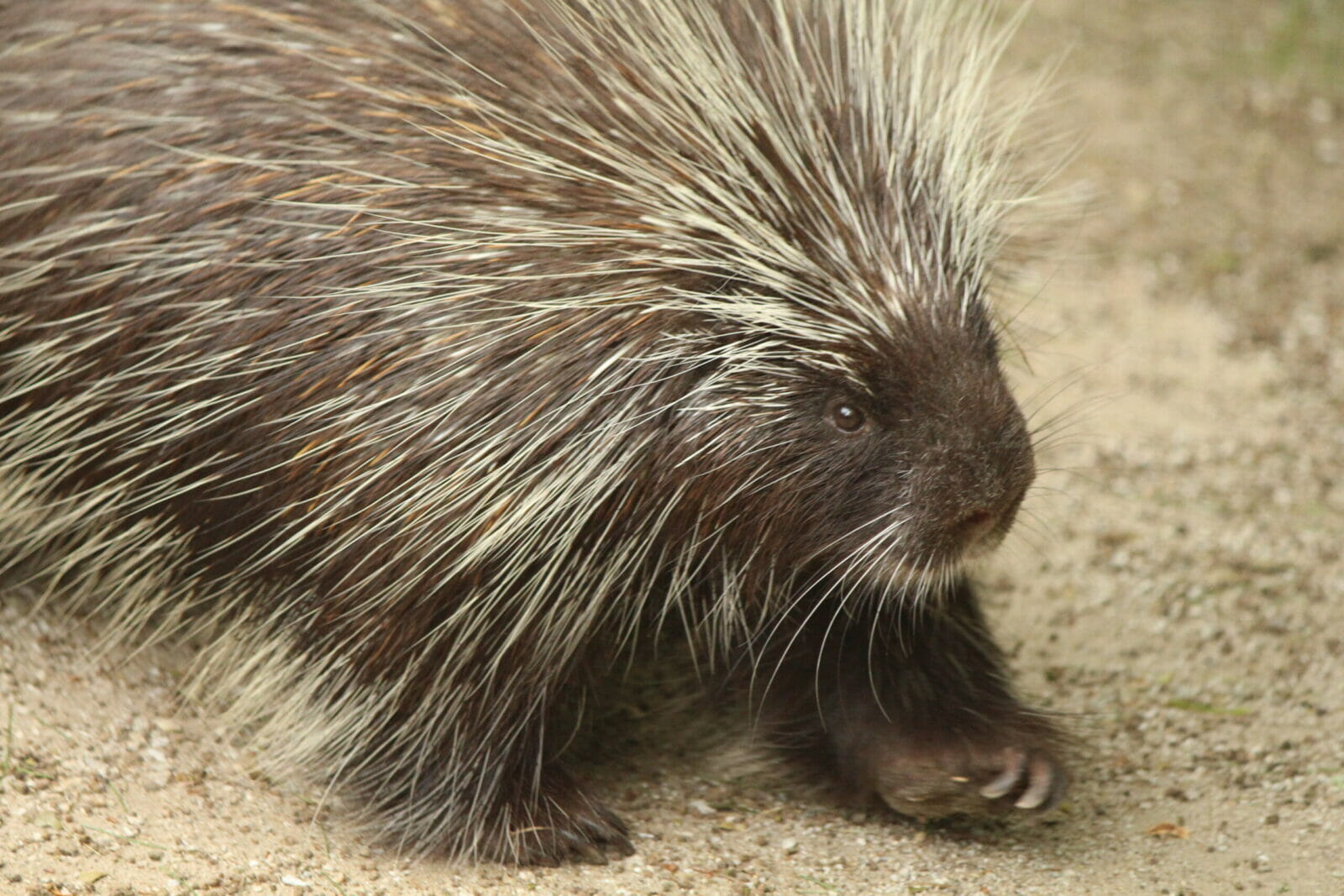
North American Porcupine
Erethizon dorsatumClass: Mammalia Order: Rodentia Family: Erethizontidae
Size
Length: 2-3.3 feet
Lifespan
Lifespan (Wild): 5-10 years
Lifespan (Captivity): 15 years
Diet
Leaves, roots, bark, seeds, fruit, and flowers.Plants, insects
Habitat & Range
Forests in Canada, northern United States, and northern Mexico
Interesting Facts
- Porcupines are the second largest rodents in North America, the largest being the beaver. Their most notable feature is their quills, which serve as a defense mechanism. Their main predator is the fisher.
- A porcupine’s body is covered in quills except for their snouts, throat, stomach, and the bottoms of their feet.
- Quills are very sharp, hollow hairs with sharp fish-hook like barbs. Porcupines cannot throw their quills, but they can raise them and try to strike predators with their tail. The quills’ barbed ends hook into the skin of the attacker and become lodged in its skin resulting in a fatal infection.
- North American porcupines have antibiotics in their skin. They are the only
mammal native to North America that has this adaptation. This helps prevent infections if they injure themselves with their own quills.
Conservation Status
Least Concern
Threats
This species has a broad range and few threats. Some populations are threatened by hunting and trapping, however.
